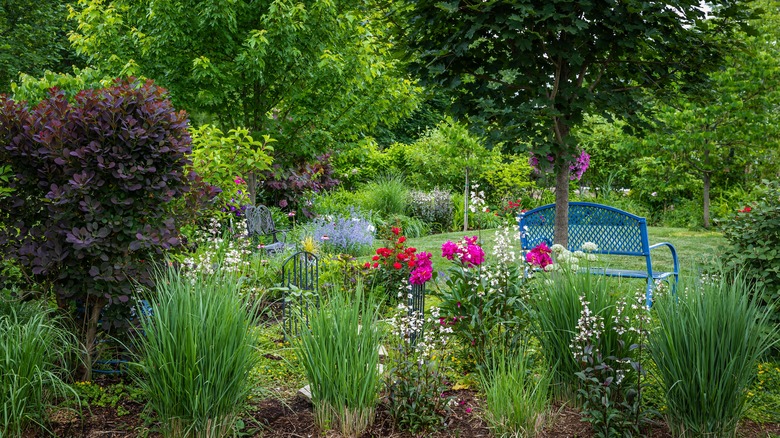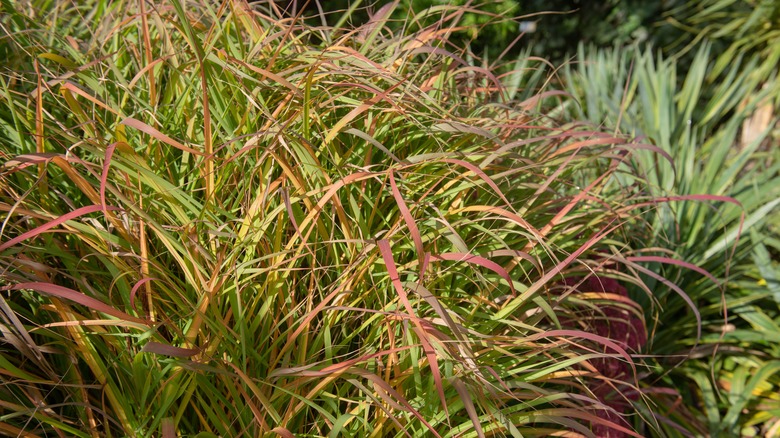The Best Types Of Prairie Grasses To Grow To Add Privacy To Your Yard Or Patio
Prairie grasses aren't just a beautiful way to add native North American plants to your landscape and provide native birds with seeds — If you choose the right varieties, they can also grow quite tall, providing you with plenty of privacy. They also make a perfect alternative to invasive options like maiden silvergrass. While some prairie grasses, like little bluestem (Schizachyrium scoparium), are a bit too petite to provide a visual barrier, others can grow 6 feet tall or more. Some of the best native prairie grass options for creating a living privacy fence are big bluestem (Andropogon gerardii), Indian grass (Sorghatrum nutans), and switch grass (Panicum virgatum).
The beautiful prairie grasses of North America can look elegant and sophisticated in clumps by themselves in a tidy, formal style, or you can create a more natural and soft design if you intersperse them with drifts of native prairie flowers like coneflowers (Echinacea purpurea), blazing stars (Liatris pycnostachya), and black-eyed Susans (Rudbeckia hirta). Regardless of the exact style you are aiming for, the tall grasses will provide a natural barrier between your patio and the rest of the world as long as you opt for grasses that fill out into large clumps with plenty of height. With switch grass thriving in zones 5 through 9 and both big bluestem and Indian grass hardy in zones 4 through 9, they all make perfect options for large swaths of North America.
Caring for tall prairie grasses
With big bluestem grass reaching heights of 8 feet and widths of 3 feet, switch grass growing to 7 feet tall by 3 feet wide, and Indian grass reaching heights of around 7 feet tall and clumps 2 feet wide, any of these grasses alone or in combination can help turn your patio into an oasis of solitude and privacy. All three species are relatively tolerant of a variety of soils and are also relatively drought tolerant once established. While switch grass can handle part shade in addition to full sun, both Indian grass and big bluestem require full sun to thrive.
Native grasses like switch grass don't require exceptional care through winter and can be left up through most of the cold season to provide interest and food for birds, though ornamental grasses should be cut back in late winter or early spring. This can be a major disadvantage while you wait for them to grow back if you're growing them to act as a privacy barrier. As beautiful as big bluestem is, it does have benefits and drawbacks. Because it spreads by rhizomes, it can slowly take over an area, which can be either positive or negative depending on what your landscaping goals are. Switch grass is also prone to spreading, both by seeds and rhizomes.

